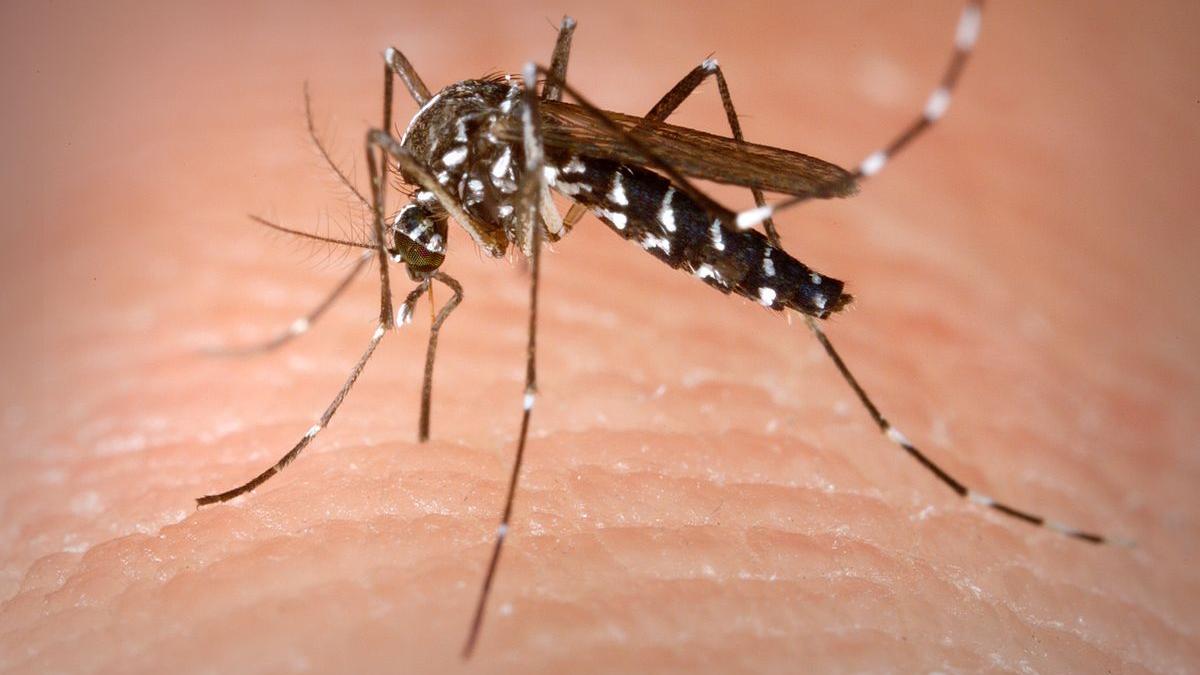An unlikely hero could help in the fight against deadly mosquito-borne disease
Mosquitoes are the most efficient disease transmitters on the planet, killing more than one million people every year, according to the World Health Organization. But a tiny and unlikely hero could help in the fight against deadly mosquito-borne diseases, according to new research.
The unlikely hero is a type of bacteria called Wolbachia. Scientists from the World Mosquito Program released mosquitoes infected with Wolbachia into an Indonesian city and saw a 77% drop in dengue cases.
Scott O’Neill, founder of the World Mosquito Program, says he and his colleagues spent years working out how to transfer Wolbachia into a particular mosquito population. Once they succeeded, he says, they discovered by chance that the bacterium prevented a range of viruses from replicating in the body of the mosquitos. If the viruses can’t grow in the mosquito, they can’t be transmitted to people.
“Dengue fever, Zika, chikungunya, yellow fever — all these viruses transmitted by the same mosquito couldn’t grow,” O’Neill says. “It’s a natural way in which we can completely stop transmission of a whole range of viruses simultaneously.”
Related: Man vs. mosquito: The local agencies at the front lines of climate change
Wolbachia occurs naturally in about 50% of all insects, bees and butterflies, but it doesn’t occur in the one particular mosquito that transmits all these viruses to people, O’Neill says. Once he and his lab worked out how to transfer the bacterium into that mosquito so that it would maintain itself in a larger population, they embarked on a program to release mosquitoes containing Wolbachia into the wild. The infected mosquitoes would then breed with wild mosquitoes and pass Wolbachia into that population, where it would spread naturally and maintain itself.
They did the main part of the experiment in the city of Yogyakarta, on the Indonesian Island of Java. They divided the city of around 400,000 people into 24 areas, half of which got the Wolbachia release of mosquitoes.
“After we let the Wolbachia into the mosquito population and it had established, we then turned on surveillance for disease in health care clinics throughout the city,” O’Neill explains. “We were looking to see the people that came to health care clinics, if they were tested and found to be positive for dengue. Did they live in a Wolbachia area or did they live in an area that didn’t receive Wolbachia?”
The results showed a 77% reduction in the number of dengue cases and an 86% percent reduction in hospitalizations among people who lived in Wolbachia areas.
Due to the type of trial design, these numbers are likely an underestimate, O’Neill notes. “We think that the true impact we’re having on things is bigger than the 77% we measured,” he says.
The scientists have now released the Wolbachia mosquitoes into the whole city so everyone can get the benefit of the intervention. They’re waiting to see if the large coverage will eliminate dengue transmission completely from Yogyakarta in upcoming years.
Related: EPA approves field trials of genetically modified mosquito
O’Neill says they spent a lot of time engaging directly with communities in the city about what they were planning to do, and listening to and answering their concerns.
“When we work in an authentic way with communities, we find that communities are very supportive,” he says. “I think part of the fundamental reason for that is that people are fearful of dengue and fearful of their children getting sick and potentially dying of dengue, and not really having any effective treatments at the moment. So, given that risk, people seem to be quite willing to try out something novel.”
Dengue fever is a terrible disease, even if it doesn’t kill you, O’Neill says. Like COVID-19, there is a spectrum of illness: some people die and some have mild disease. A bad case can cause piercing headaches, a metallic taste in the mouth, a rash all over the body, and vomiting and weakness so acute people can’t get out of bed even to go to the toilet.
“People will describe it as one of the worst couple of weeks of their lives,” O’Neill says. “It’s quite devastating for communities. Hospitals fill up, people can’t go to work. It has a big social and economic cost, as well as a direct health cost.”
Related: Why a famous biologist wants to eradicate killer mosquitoes
Wolbachia alone is unlikely to completely eliminate diseases like dengue, O’Neill notes.
“I think we’re probably going to need multiple tools,” he says. “It’s such an entrenched problem: Up to 400 million people [are] infected every year; all the…major tropical cities of the world are at risk of dengue. Probably any one tool by itself may not be sufficient to completely eliminate it, but a combination of tools and a concerted effort to work on dengue elimination…should be able to make great headway in the future to reducing disease.”
Where scientists are releasing Wolbachia, they are seeing elimination of local disease, but they would “love to see the methods scaled up enormously around the world to benefit communities,” he adds. “We’re hopeful that in the coming years, we’ll see an expansion. But just because of the size of the problem, it’s going to take many years.”
This article is written by Adam Wernick, based on an interview that aired on Living on Earth from PRX.
Our coverage reaches millions each week, but only a small fraction of listeners contribute to sustain our program. We still need 224 more people to donate $100 or $10/monthly to unlock our $67,000 match. Will you help us get there today?
